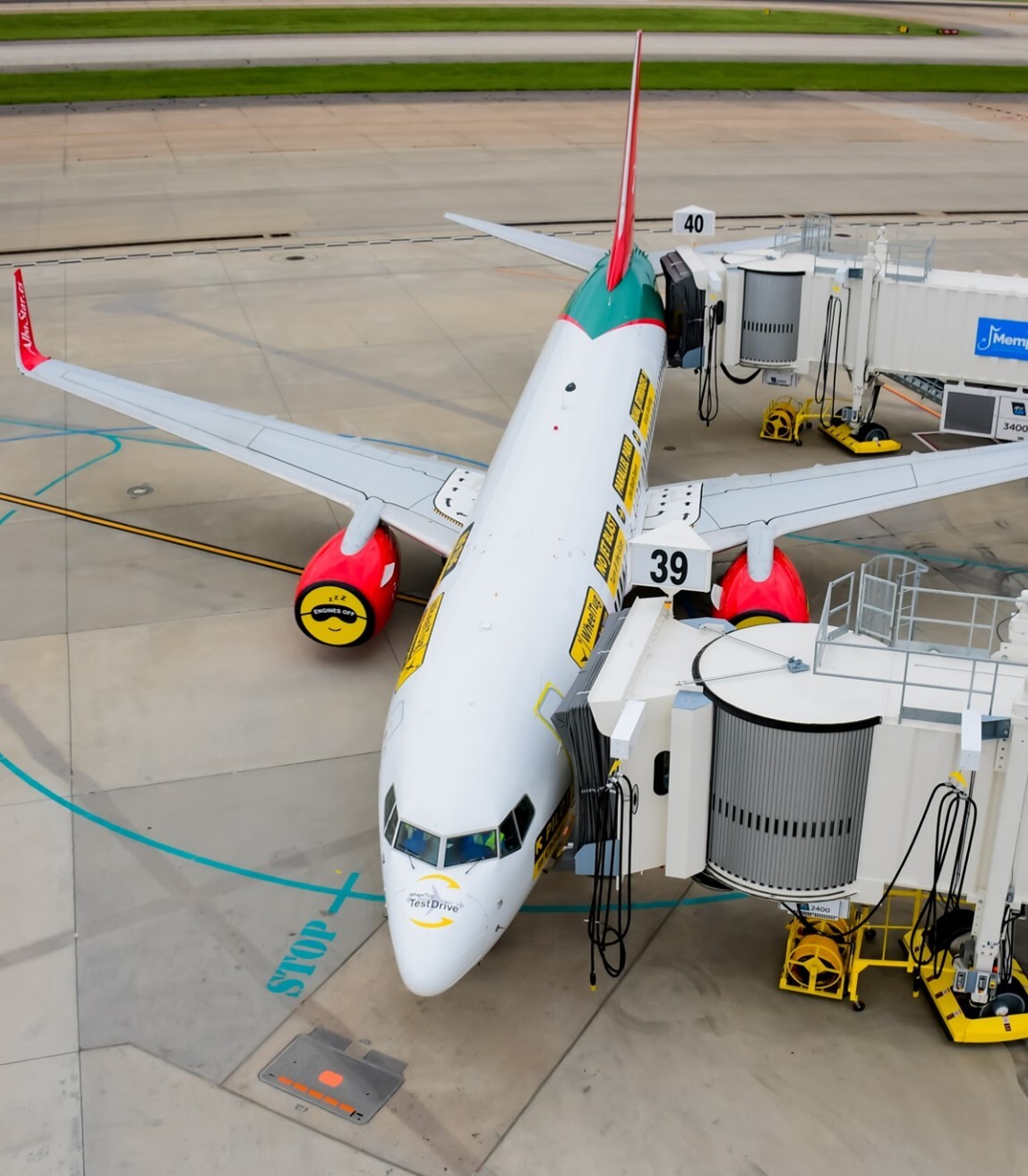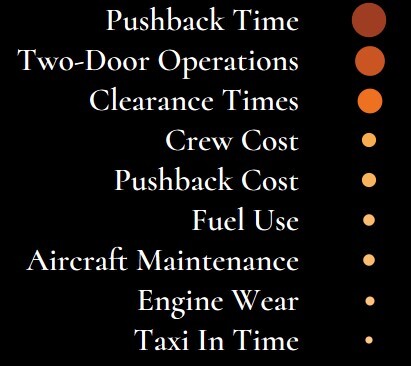7 minutes/flight
The Average time WheelTug can save by eliminating tugs, pre-taxi engine starts, engine start clearances and wingmen (with optional backup camera).
20 minutes/flight
That's what WheelTug can save with two-door operations, which will be possible throughout Asia.
WheelTug saves hundreds of hours a year per aircraft.

